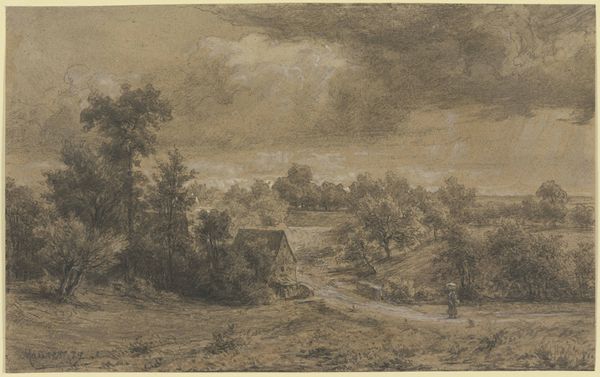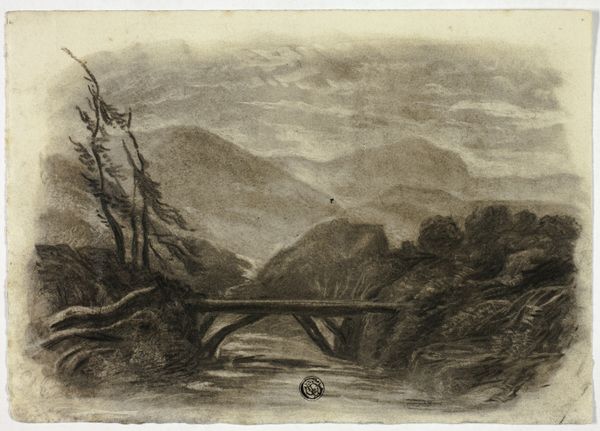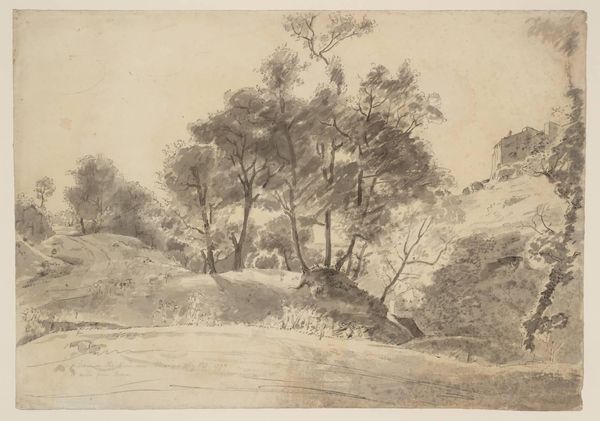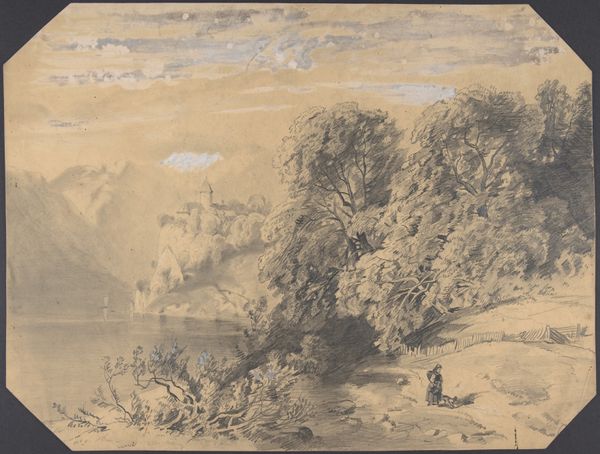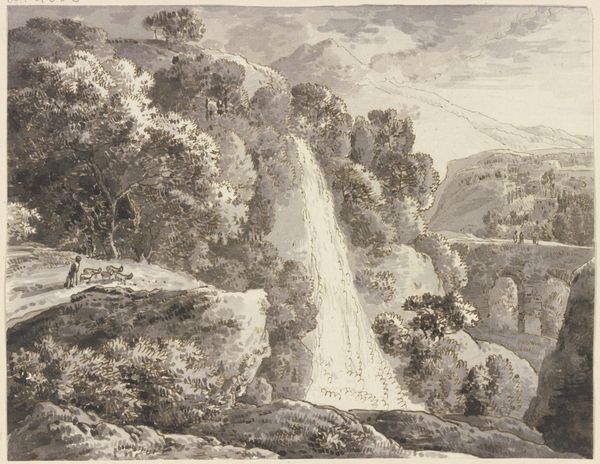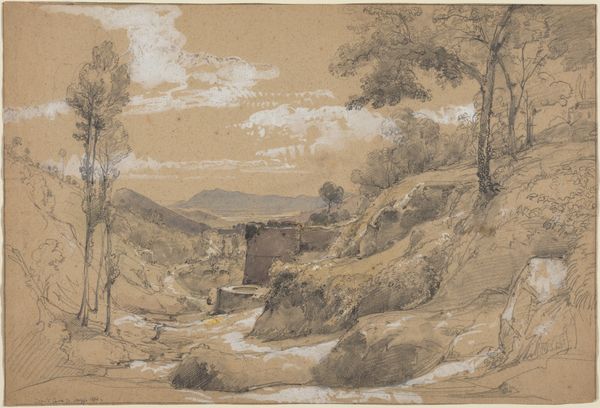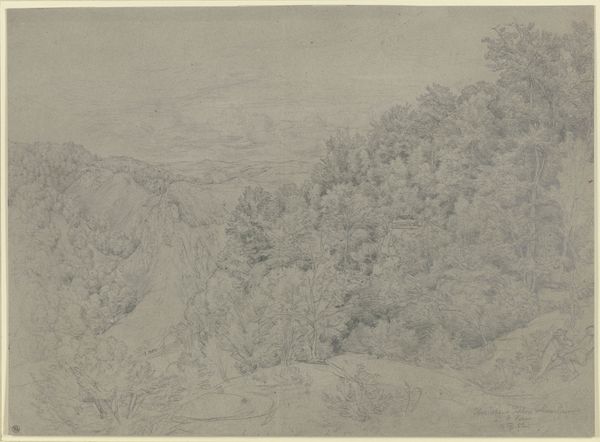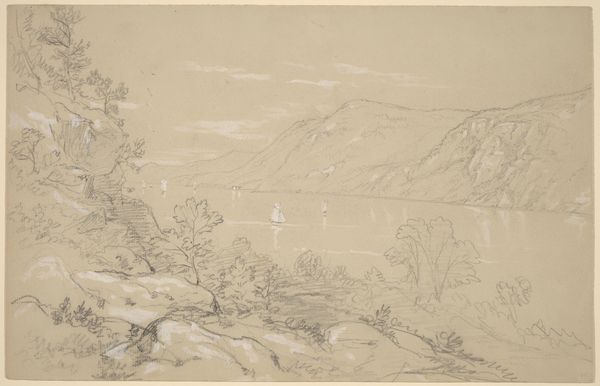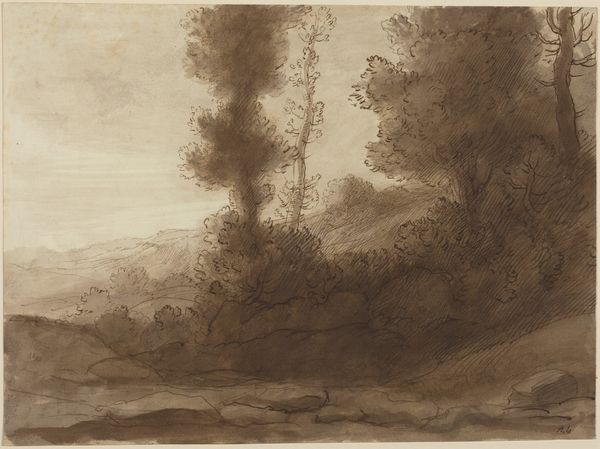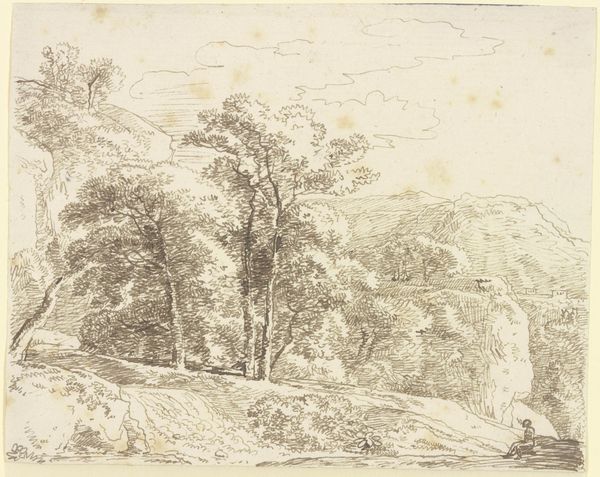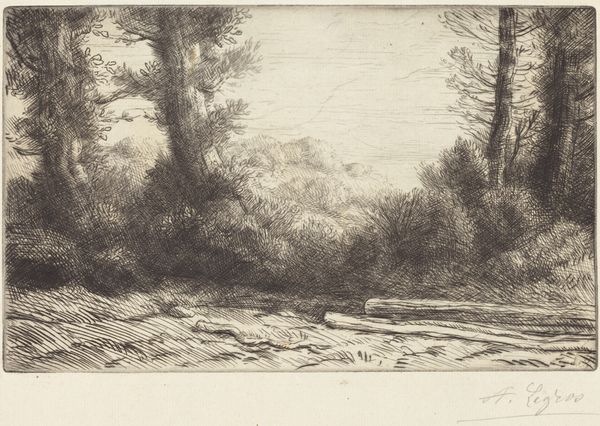
drawing, watercolor
#
drawing
#
landscape
#
watercolor
#
romanticism
#
picturesque
#
watercolor
Dimensions: overall: 27.1 x 36.9 cm (10 11/16 x 14 1/2 in.)
Copyright: National Gallery of Art: CC0 1.0
William Gilpin created this landscape with pen and gray wash, capturing a scene where nature and architecture intertwine. Dominating the vista, the stone bridge carries echoes of Roman aqueducts, symbols of human ingenuity and dominion over the natural world. Yet, Gilpin's bridge is not merely functional; it embodies the picturesque aesthetic—an ideal born from the desire to find beauty in untamed nature. It is an invitation to contemplate the sublime. Centuries before, similar arches appeared in triumphal Roman art, celebrating military victories. Gilpin's bridge shares that spirit of human triumph. The arch, a symbol of transition and passage, appears again and again—from ancient city gates to the vaulted ceilings of Gothic cathedrals. We recognize the arch as a powerful force engaging us on a deep, subconscious level. Consider how this emblem resurfaces, evolving through time and taking on new meanings in different cultural contexts. It represents not a linear march of progress, but a cyclical return—an eternal echo across the corridors of time.
Comments
No comments
Be the first to comment and join the conversation on the ultimate creative platform.
